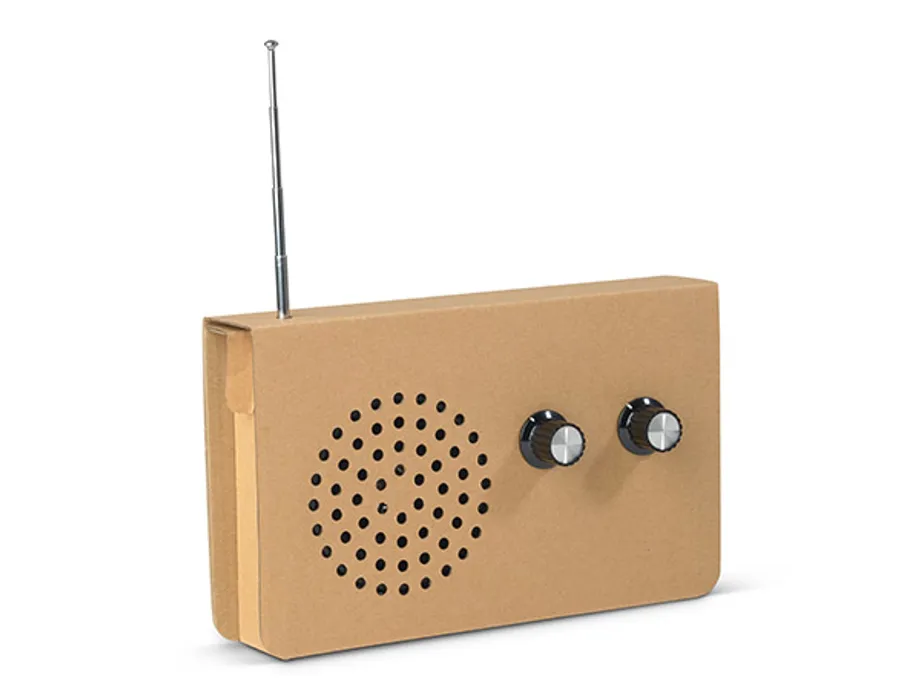Radio
Radio is the radiation (wireless transmission) of electromagnetic energy through space. The biggest use of radio waves is to carry information, such as sound, by systematically changing (modulating) some property of the radiated waves, such as their amplitude, frequency, phase or pulse width.
hen radio waves strike an electrical conductor, the oscillating fields induce an alternating current in the conductor. The information in the waves can then be extracted and transformed back into its original form.
Cardboard radio
This is a Science Museum battery powered FM radio and MP3 speaker with recycled cardboard exterior.
FM broadcasting is a VHF broadcasting technology, pioneered by Edwin Howard Armstrong (American electrical engineer and inventor), which uses frequency modulation (FM) to provide high-fidelity sound over broadcast radio.
In the United Kingdom, the BBC began FM broadcasting in 1955, with three national networks hosted by popular DJs (disk jockeys), including the Light Programme, Third Programme and Home Service.

